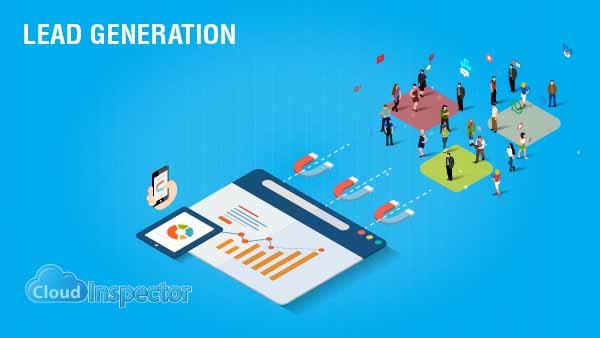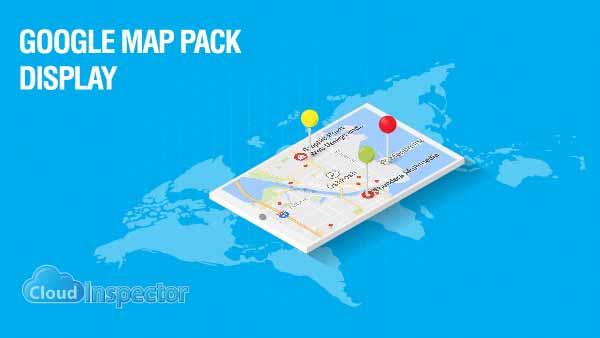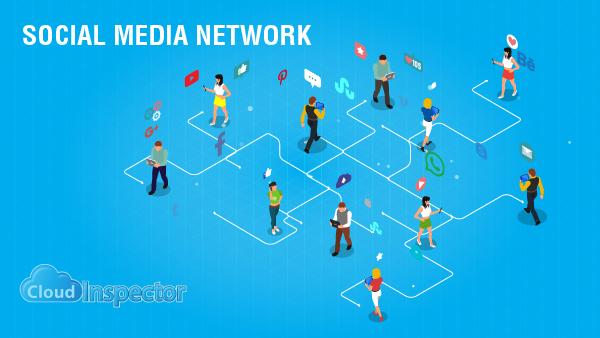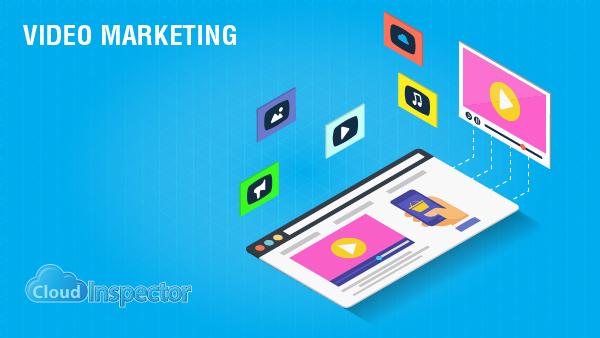Do you know how much an influencer marketing campaign costs? Or how much you should be paying an influencer?
If you’re not quite sure, don’t be worried. I’m like you. I didn’t know much before I did the research for this blog post.
And in truth, there’s no exact science to figuring out how much you should pay influencers, as one social media executive explained to Digiday: “We have no idea what to pay them. That’s the problem.”
While there isn’t a clearcut answer to this question, there are some guidelines used by marketers, agencies, and influencers themselves. There are even tools to help you calculate how much to pay specific influencers.
We are going to share all these in this blog post. If you are interested, let’s dive in.

6 factors that affect the cost of influencer marketing
Before we dive into the guidelines used by marketers, agencies, and influencers, I would love to briefly cover the factors that affect the cost of each influencer marketing campaign.
This is because the guidelines below might not always apply to your influencer marketing campaign. Understanding these factors allows you to adjust your rates accordingly so that you can find a price that works for both you and the influencer.

1. Social media platform
The social media platform chosen for the campaign is one of the key factors that influence the cost. As you’ll read below, the cost of influencer marketing varies across channels. It’s as though each social media platform has its own “market” rate.
Instagram tends to be the top choice for social media influencer marketing, followed by YouTube and Snapchat. Generally, influencer marketing is less common on Facebook and Twitter.
musical.ly, a less well-known yet massive social media platform, is becoming more popular for influencer marketing. Companies like Coca-Cola have partnered with influencers on musical.ly for their campaigns.
2. Following
Traditionally, brands look at the potential reach of an advertising channel to decide how much to pay for an advertisement. Hence, the number of followers of an influencer became a consideration when deciding how much to pay an influencer. The idea is that the more followers an influencer has, the more people the brand could reach. So influencers with a larger following will usually charge more.
According to Digiday’s state of influencer marketing report, ‘The number of followers is still the gold standard for a social star’s “influence”’.
But as it’s possible for people to buy fake followers to inflate their follower count, brands are also looking at other metrics to price their influencer marketing campaign.
3. Engagement
Engagement is one of the alternative metrics that brands have been using. While it’s easy to buy fake followers, it’s harder to buy fake engagement (though, it’s not impossible). When influencers can get their followers to engage with their social media posts, the influencer marketing campaign becomes more effective for the brand as those followers are essentially engaging with the brand.
Furthermore, social media algorithms are prioritizing engagement. The more positive engagement a post gets, the more people will see the post. Influencers who have higher engagement rate are more likely to have a greater reach.
Hence, the higher the engagement rate the influencer gets, the more expensive the campaign will be.
4. Product
The product you’re selling (or the industry you’re in) can also affect the cost of your influencer marketing campaign. Hiring an influencer to promote a sports car will generally cost more than hiring an influencer to promote a fruit juice.
A good rule-of-thumb is that the more expensive your product is, the more expensive the campaign will be.
5. Direct partnership or through an agency
Chelsea Naftelberg, associate director of content and partnerships for the social media agency, Attention, shared with Digiday that “if you are working with a talent agent instead of directly with an influencer, expect to pay a little more to take their fee into account.”
Working with a talent agency is more expensive than working with an influencer directly.
This is because the talent agency would usually to charge a commission for connecting you with the right influencers. In addition, influencers that are part of a talent agency are usually more experienced with influencer marketing and would command a higher fee.
If you want to save some money here, here are two ways to find the right influencers for your campaign yourself.
6. Campaign
Finally, the extent of the campaign will also affect the cost. Here are some questions to think about:
- How many posts do you want from the influencer?
- Who creates the content? You or the influencer?
- Do you want the influencer to cross-post to their other social media profiles?
- Do you want the influencer to keep the post on their profile permanently? (Some influencers delete their sponsored posts after the campaign.)
Simply put, the more work the influencer has to do, the more expensive the campaign will be.

How much does influencer marketing cost?
$5,000 to $10,000.
According to HYPR, an influencer marketing platform, that is the price you can expect to pay for a post by an influencer with 500,000 to one million followers across their social media profiles.
But what are the “market” rates for each social media platform?
Or what if you want to work with smaller influencers — micro-influencers?
From my research, I discovered insightful guidelines from various sources such as Digiday, Quora, and blogs. In some cases, marketers and agencies shared how much they pay for influencers. In other cases, influencers themselves disclosed how much they charge brands.
Here’s what I found:

Instagram
$10 per 1,000 followers
According to Digiday’s findings, a good guideline for Instagram influencer marketing is $1,000 for every 100,000 followers (or simplified to $10 for every 1,000 followers).
Chelsea Naftelberg, associate director of content and partnerships for social media agency Attention, estimates how much her team should pay an Instagram influencer based on $1,000 per 100,000 followers.
Langer thinks that brands can start with $250 per Instagram post for social stars with less than 50,000 followers, then add roughly $1,000 per 100,000 followers per post.
This matches what lifestyle blogger, Lee Anne, charges for her Instagram sponsored posts. The formula she uses and recommends is $5 to $10 per 1,000 followers.
$250 to $750 per 1,000 engagement
Another guideline is to look at the average post engagement that the influencer gets.
As most people have more followers than the amount of engagement they receive per post, you’ll generally pay more for each engagement than each follower. Tony Tran, CEO and co-founder of influencer marketing platform, Lumanu, suggests paying around $0.25 to $0.75 per average post engagement (or $250 to $750 per 1,000 engagement). That means that if the influencer usually gets 1,000 engagement for each post, you’ll want to pay him or her about $250 to $750.
A tool you can use to help you is the Instagram Money Calculator by Influencer Marketing Hub.
Simply enter the username of the Instagram influencer that you’re interested in and the calculator will estimate the earnings per post (or the cost per post for you).

It seems like a post on our Instagram account is worth about $200. Would you pay that much for a post on our Instagram profile? (Perhaps a new revenue source for us?  )
)
Another tool is InfluencerDB. InfluencerDB suggests a media value per post (or cost per post for you) based on the engagement and reach of the Instagram account.
YouTube
$20 per 1,000 subscribers
It’s common for YouTube influencers to charge more than Instagram influencers as creating a YouTube video can require much more effort than creating an Instagram post. Furthermore, YouTube videos are often longer than Instagram videos.
Henry Langer, a lead account manager of influencer marketing platform, HYPR, shared with Digiday that YouTube influencers usually charge $2,000 for every 100,000 subscribers they have (or simplified to $20 for every 1,000 subscribers).
For YouTubers with more than 50,000 subscribers, marketers can add roughly $2,000 per 100,000 followers per video, up until around 1 million subscribers, at which point a dedicated video could cost upwards of $25,000-$50,000, according to Langer.
$50 to $100 per 1,000 video views
Thanks to the analytics provided on YouTube, you can also look at the average video views of the influencer.
Not every subscriber would watch every video by the influencer so each video view would generally cost more than each subscriber. Tony Tran of Lumanu recommends paying around $0.05 to $0.10 per average video view (or $50 to $100 per 1,000 video views). He suggests looking at the 30 most recent videos by the influencer to get a good average of his or her video views.
If you don’t want to go through the trouble of pricing your campaign, you could use a platform like FameBit (by YouTube). On FameBit, you can set a budget and have YouTube influencers reach out to you with their proposal. Here’s a great Quora answer on how to set your budget based on metrics like customer lifetime value and conversion rate.

Snapchat
$10 per 1,000 followers
There is less influencer marketing cost data for Snapchat than Instagram and YouTube but here are some data points that could be helpful.
According to Captiv8, an influencer marketing startup, a Snapchat influencer with three million to seven million followers can charge, on average, $75,000 for a snap while one with 50,000 to 500,000 followers can charge, on average, $1,000 for a snap. That is about $11 to $25 per 1,000 followers for influencers and $2 to $20 per 1,000 followers for micro-influencers — or a ballpark figure of $10 per 1,000 followers.

Marketers in the UK seems to pay Snapchat influencers much more — about $70 to $100 per 1,000 followers..
$100 per 1,000 views
As Snapchat doesn’t reveal the follower count, that number is often estimated using the number of views of the first Snapchat story. Some brands and agencies prefer to look at the number of views directly. After gathering insights from more than 30 Snapchat influencers, Snapchat influencer, Cyrene Quiamco, shared the following rates with Digiday:
- $500 for 1,000-5,000 views
- $1,000-$3,000 for 5,000-10,000 views
- $3,000-$5,000 for 10,000-20,000 views
- $5,000-$10,000 for 30,000-50,000 views
- $10,000-$30,000 for 50,000-100,000 views
That is about $100 per 1,000 views.
Have you worked with a Snapchat influencer before? It’ll be great if you are up for sharing some of your numbers.
Facebook and Twitter – maybe not
From my research, influencer marketing seems to be less common on Facebook and Twitter.
Tony Tran of Lumanu actually advises against it.
Facebook: you should never pay for a Facebook-only influencer. Facebook is a channel for content amplification — thus it only makes sense to pay an influencer to post on Facebook if you are already paying her for content creation on one of her other channels. Facebook organic reach is notoriously bad, so there really is no value in paying a Facebook influencer no matter how large her reach is – unless you can get permission to boost the content (at which point it’s your own money anyways!)
Twitter – forget it, stop, turn around and RUN do not walk away. Twitter is a sinkhole for tossing any marketing dollars, much less influencer marketing. Unless you’re getting a free shoutout on Twitter, don’t even think about spending influencer dollars here.
This matches my personal experience. I don’t remember seeing any influencer marketing posts on Facebook and Twitter. Have you seen any?
If you have done influencer marketing on Facebook or Twitter, I would love to hear your experiences! Would you recommend it?

How much would you pay for influencer marketing?
From my research, one thing is clear. There isn’t a clearcut answer to the cost of influencer marketing. It is influenced by many factors such as the chosen social media platform, follower count, engagement rate, and more.
Fortunately, there are some guidelines that you can refer to and adjust according to your particular situation.
- Instagram – $10 per 1,000 followers or $250 to $750 per 1,000 engagement
- YouTube – $20 per 1,000 subscribers or $50 to $100 per 1,000 video views
- Snapchat – $10 per 1,000 followers or $100 per 1,000 views
Do these numbers match your experiences? How much have you paid or how much would you pay for influencer marketing? Let’s share what we know and help one another.

Topics: Influencer marketing, Social media strategy
The awesome featured image is by rawpixel.com and was taken from Unsplash.

Thank
How Much Does Social Media Influencer Marketing Cost? for first publishing this post.




























